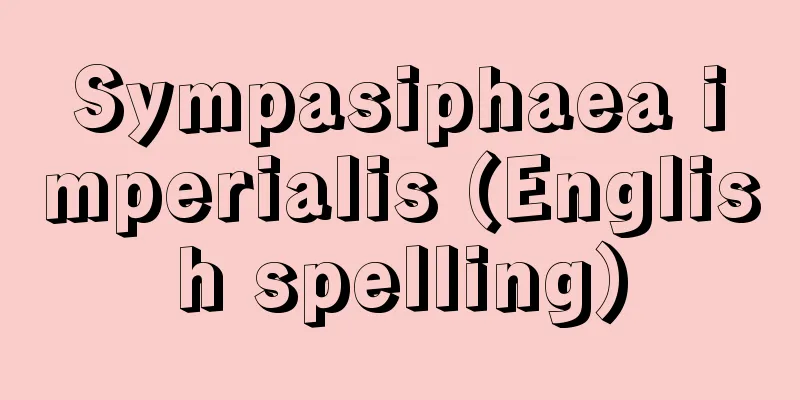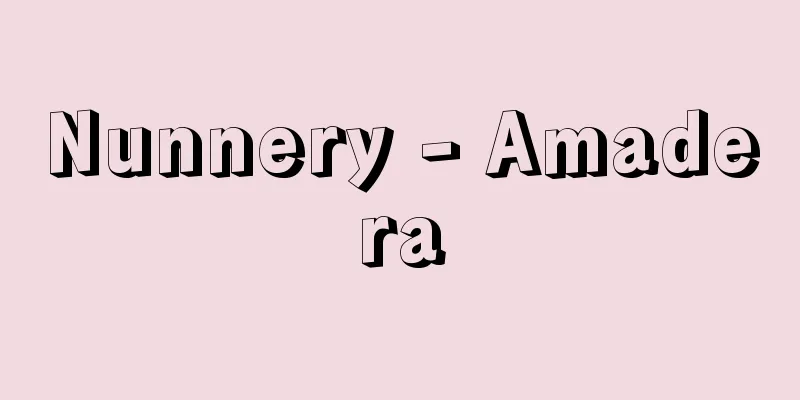Moscow Art Theater - Moskovskiy hudozhestvennïy akademicheskiy teatr

|
A representative Russian theater company and theater. Its official name is the Moscow Art Academic Theater, abbreviated as MXAT. It is located in Kamergel (Old Art Theater) Lane on Tver (Old Gorky) Street in Moscow. It was founded in 1898 by Stanislavsky and Nemirovich-Danchenko with the aim of creating realistic theater that rejected the old habits of the theater world controlled by bureaucrats and impresarios, stardom, and theatrical performances. It began performing under the name "Art Public Theater" (until 1907) at the Hermitage on Kaletnyi Street. In October, it launched with A. K. Tolstoy's "Tsar Fyodor Ivanovich." In December, it performed Chekhov's "The Seagull," which had failed at its premiere at the Alexandrinsky Theater (1896), and received rave reviews, and the seagull became the symbol of the Moscow Art Theater. The theater was built at its current location in 1902. Through its encounters with the writers Chekhov and Gorky, it became a spiritual anchor for progressive intellectuals, bringing fresh air to the stagnant theater world with Chekhov's Uncle Vanya (1899), Three Sisters (1901), and The Cherry Orchard (1904), and Gorky's Petty Bourgeoisie and The Lower Depths (both 1902), and also introduced modern Western plays by Ibsen and Hauptmann. It gained worldwide fame on its first overseas tour in 1906, and produced many great actors, including Kachalov, Moskvin, and Knipper Chekhova. During the reactionary period after the First Revolution (1905), the theatre strengthened its mystical and symbolic tendencies by staging works by Maeterlinck, Andreev, and Merezhkovsky, and after the October Revolution (1917) it was criticized for its conservatism by Meyerhold. However, it sought out a style of theatre appropriate to the Soviet era, and established an unshakable position with successes such as Bulgakov's The Turbin Days (1926) and Ivanov's The Armored Train No. 14-69 (1927), which dealt with the revolution and modern times. Since the 1950s, the theater has tended to stagnate due to its reliance on the "Stanislavsky System," the guiding principle of socialist realist theater, but in 1970, Efremov was appointed chief director, and the leadership was rejuvenated, and the theater began to add innovative performances. By 1987, the theater had expanded to include the old building on Kamergel Lane, the attached theater on Moskvin Street, the new building on Tverskoy Boulevard that opened in 1975, and a small stage, and had a total of 400 members (including 157 actors), so the new building was renamed the Theater of Friendship of Peoples, and Efremov took over the management of the entire theater, with the group in the old building being led by Efremov, and the groups in the attached theater and new building being led by actress Daronina. The theater came to Japan in 1958, 1968, and 1988. In 1989, two independent theater companies were established: the Chekhov Moscow Art Theater led by Efremov and the Gorky Moscow Art Theater led by Dalonina. [Nobuyuki Nakamoto] "Recollections of the Moscow Art Theatre" by Nemirovich-Danchenko, translated by Satoshi Uchiyama (1952, Hayakawa Publishing) [References] | | |Source: Shogakukan Encyclopedia Nipponica About Encyclopedia Nipponica Information | Legend |
|
ロシアの代表的な劇団および劇場。正式名は「モスクワ芸術アカデミー劇場」といい、「ムハト」MXATと略称する。モスクワのトベリ(旧ゴーリキー)通りのカメルゲル(旧芸術座)横町にある。1898年、スタニスラフスキーとネミロビチ・ダンチェンコが官僚や興行主の支配する演劇界の旧弊、スター主義、芝居がかりの演技を排したリアリズム演劇を目ざして創立、「芸術公衆劇場」という名称で(1907年まで)、カレートヌイ通りの「エルミタージュ」を本拠地にして公演活動を始める。10月にA・K・トルストイの『皇帝フョードル・イワノビチ』で旗揚げした。12月にはアレクサンドリンスキー劇場の初演(1896)で失敗したチェーホフの『かもめ』を上演して絶賛を博し、カモメがモスクワ芸術座の標章となった。1902年に現在地に劇場を新築。作家チェーホフ、ゴーリキーとの出会いによって進歩的知識人たちの魂のよりどころとなり、チェーホフの『ワーニャ伯父さん』(1899)、『三人姉妹』(1901)、『桜の園』(1904)、ゴーリキーの『小市民』『どん底』(ともに1902)で沈滞した劇界に新風を送り、またイプセンやハウプトマンら西欧近代劇を紹介した。1906年の最初の国外巡演で世界的な名声を得、カチャーロフ、モスクビン、クニッペル・チェーホワら多数の名優を輩出した。 第一次革命(1905)後の反動期にはメーテルリンク、アンドレーエフ、メレジコフスキーらの作品の上演で神秘主義・象徴主義的傾向を強めたり、十月革命(1917)後メイエルホリドから保守性を批判されたりしながら、ソビエト時代にふさわしい演劇を模索し、革命と現代を扱うブルガーコフの『トゥルビン家の日々』(1926)やイワーノフの『装甲列車14‐69号』(1927)などの成功で揺るぎない地位を占めた。 社会主義リアリズム演劇の指導原理となった「スタニスラフスキー・システム」の本家という甘えなどから1950年代以降停滞ぎみとなったが、70年にエフレーモフを主任演出家に迎えて指導部の若返りを図り、演目にも斬新(ざんしん)なものを加えるようになった。87年にはカメルゲル横町の旧館、モスクビン通りの付属劇場、75年に開場したトゥベルスコイ・ブールバールの新館、それに小舞台をもつ、総員400名(うち俳優157名)の大世帯に膨れ上がったため、新館を諸民族友好劇場と改称、旧館のグループをエフレーモフ、付属劇場、新館のグループを女優ダローニナが指導し、全体をエフレーモフが統轄することになった。58年、68年、88年に来日公演を行っている。89年、エフレーモフの率いる「チェーホフ記念モスクワ芸術座」と、ダローニナの率いる「ゴーリキー記念モスクワ芸術座」の二つの独立した劇団が生まれた。 [中本信幸] 『ネミロビッチ・ダンチェンコ著、内山敏訳『モスクワ芸術座の回想』(1952・早川書房)』 [参照項目] | | |出典 小学館 日本大百科全書(ニッポニカ)日本大百科全書(ニッポニカ)について 情報 | 凡例 |
Recommend
Lithopone - Lithopone (English spelling)
A white pigment made from a mixture of zinc sulfi...
Miyake [town] - Miyake
A town in Shiki County, Nara Prefecture. It occupi...
Florentine School - Scuola Fiorentina
The name used for paintings in Florence, Italy, f...
Kinako - Soybean flour
Soybeans are roasted over an open flame, roughly c...
Base fertilizer - Motogoe
〘 noun 〙 Fertilizer applied to cultivated land bef...
Legal philosophy - Rechtsphilosophie; legal philosophy; jurisprudence
A field of study that studies fundamental and fund...
Eophileurus chinensis (English spelling) Eophileuruschinensis
...The Hercules beetle, which lives in South Amer...
Contributed capital -
...This is a way of thinking that reflects the ch...
Grammar school
A traditional secondary school in England since th...
paper-chase
…The marks can be drawn on the ground, on stones,...
Ball crown - Kyukan
The part of a sphere cut by a plane that intersect...
Uppsala University - Uppsala University
Located in Uppsala, Sweden, Uppsala University is...
Landowska
A Polish female harpsichordist and pianist. She de...
Cinnamyl alcohol
…It is an aromatic unsaturated alcohol, also know...
Phillips, AB (English spelling) PhillipsAB
...a curve that shows a negative correlation betw...









![Kiryu [city] - Kiryu](/upload/images/67cb614bd30be.webp)